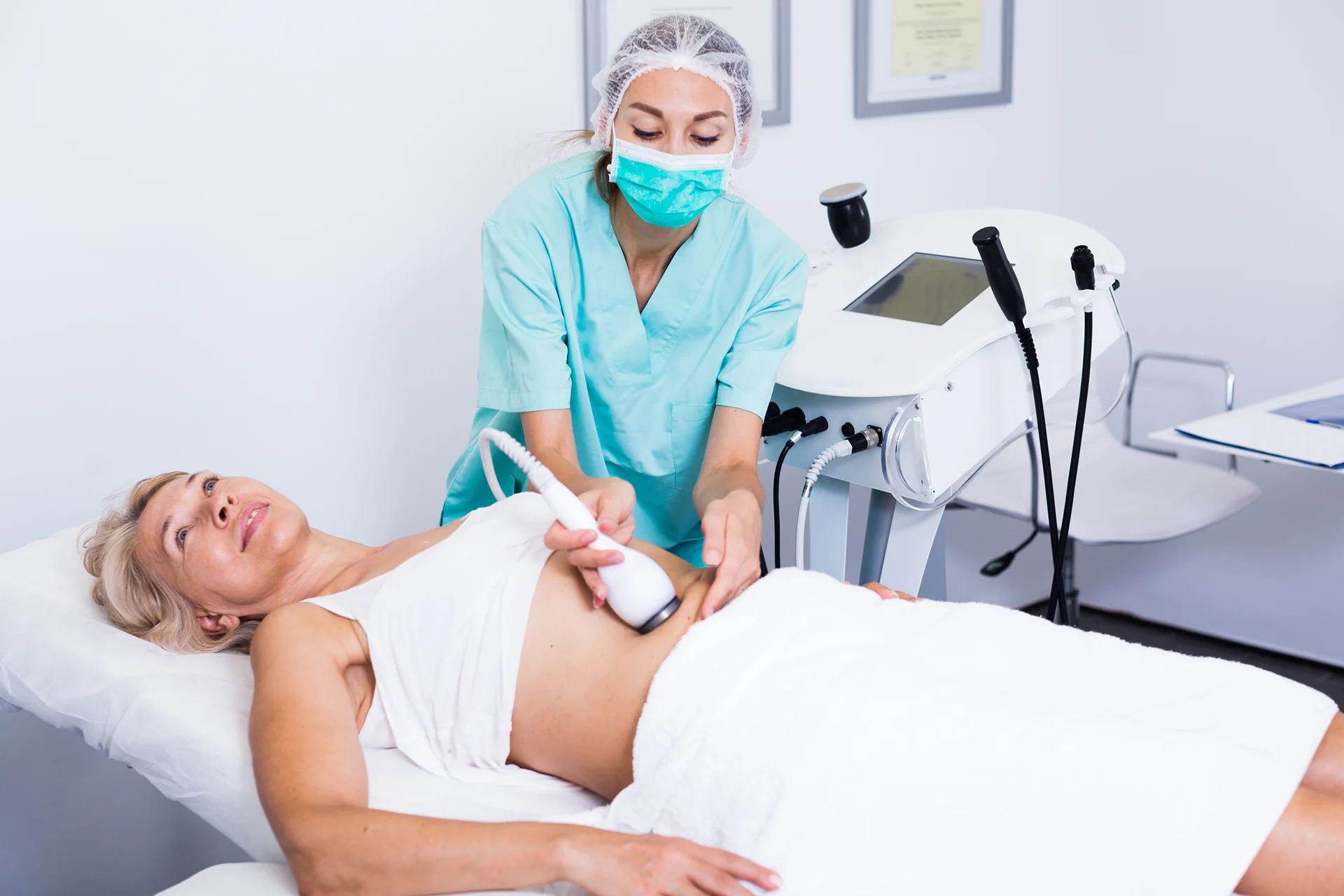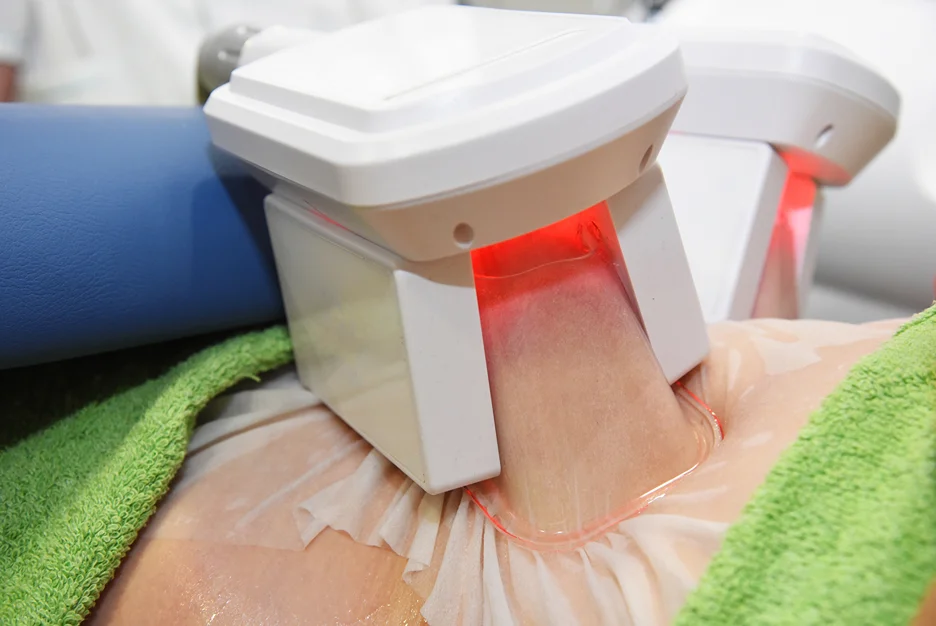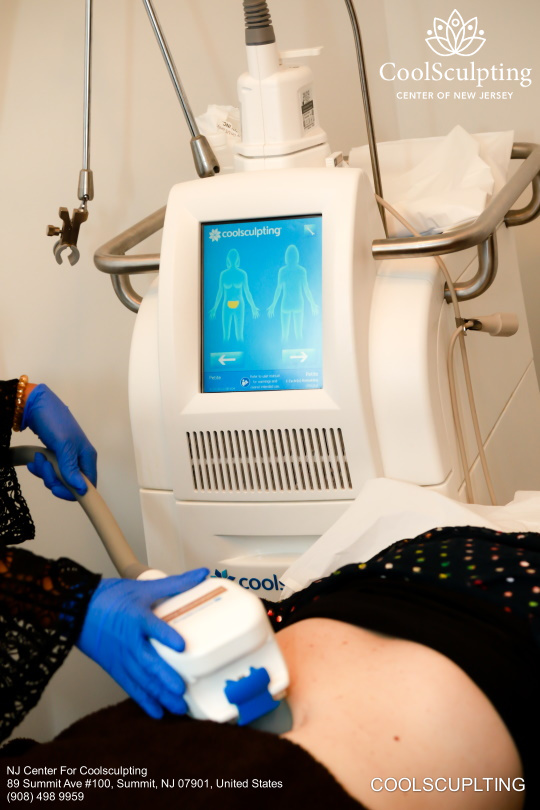Menu
(908) 628-1070

Have you been trying to get rid of stubborn fat in certain areas of your body, but diet and exercise just aren't cutting it?
You may have heard of newer, non-surgical fat reduction treatments like cryolipolysis and CoolSculpting and wondered if they could help you achieve the slimmer, more toned look you've been going for.
But with similar-sounding names and promises of eliminating fat without surgery, how do you know which one is right for your body and goals?
These groundbreaking procedures use extreme cold to eliminate diet- and exercise-resistant fat.
But the question here is this: Is there really a difference between cryolipolysis vs CoolSculpting when it comes to freezing away fat? Let’s explore how they stack up.
Up to 25% Fat Reduction With CoolSculpting: Treat Yourself Today!
First, let’s start with a quick overview of what cryolipolysis and CoolSculpting entail.
Both are non-surgical procedures that use extremely cold temperatures to reduce fat deposits in specific areas of the body through a process called cryolipolysis—literally “cold” and “fat destruction.”
During cryolipolysis, fat cells are chilled to near freezing temperatures. This cold shock causes the fat cells to undergo apoptosis—natural cell death—and begin to die off.
The body then gradually eliminates the dead fat cells over the next several months after treatment. The result is a reduction in fat bulges and more sculpted body contours in the treated area.
While the technology behind cryolipolysis devices all works the same way, there are actually multiple brand name devices on the market—with the two most popular being CoolSculpting and cryolipolysis devices from other manufacturers like Zeltiq.
So while CoolSculpting utilizes cryolipolysis technology, not all cryolipolysis treatments are CoolSculpting.
Now that we’ve clarified the basic fat freezing process used in cryolipolysis and CoolSculpting treatments, let’s look at how they compare in a number of categories:

The mechanism of fat reduction is essentially the same with cryolipolysis and CoolSculpting.
With both procedures, a device delivers controlled cooling at just the right temperature to crystallize and destroy fat cells, without damaging surrounding skin, muscle, and nerves. The body's natural inflammatory response then gradually eliminates the damaged fat cells.
Here’s a quick overview of how the treatment process works with each method:
During a cryolipolysis session, a technician will place applicators directly on the area being treated. The applicators cool the skin down to about 5oC (23oF). Patients may feel some pulling, tugging, or pressure as the applicator adheres to the skin.
The technician leaves the applicators in place for 30-60 minutes while the underlying fat tissue is chilled. After the applicators are removed, the treated area may be massaged to break up the crystallized fat cells so they can be eliminated faster.
Some mild side effects like redness, numbness, and bruising are possible after treatment. Several sessions spaced a minimum of 4 weeks apart may be needed to achieve desired fat reduction.
The CoolSculpting device looks similar to the cryolipolysis applicators. It uses a gel pad and applicator arms to draw tissue into the cooling panels.
The skin is then cooled to the optimal fat-freezing temperature. Patients often describe the first few minutes of the procedure as intense coldness and stinging that soon fades.
CoolSculpting applicators must stay on the treatment site for 35 minutes up to over an hour depending on the area being treated. There is no manual massage after treatment but the area may look red for a few hours afterwards.
As with cryolipolysis, several treatments are usually needed for the best fat reduction.
While the devices may look a bit different, the core technology of fat freezing is essentially equivalent with both procedures.
But there are some differences when it comes to ideal treatment areas and costs.
Cryolipolysis and CoolSculpting can both be used to reduce unwanted fat from targeted spots on the body through cold-induced fat cell death.
But the specific approved treatment areas differ slightly between the two.
Here are the areas of the body most effectively treated with each method:
| Cryolipolysis | CoolSculpting |
| - Abdomen (muffin top) - Flanks (love handles) - Upper/mid back fat - Inner and outer thighs - Buttocks - Chest and back fat in men - Under the chin | - Upper and lower abdomen - Inner and outer thighs - Flanks and back rolls - Upper arms - Under the chin and jawline - Bra fat - Under the buttocks - Knees - Ankle fat |
As you can see, there is a good deal of overlap when it comes to common trouble spots that can be tackled with cryolipolysis vs CoolSculpting.
However, CoolSculpting offers more versatility to treat smaller problem areas like underarm, knee, and ankle fat. The CoolSculpting device uses smaller applicators that can better contour to these localized bulges.
So while more body areas respond to CoolSculpting, both treatments excel at slimming general problem zones like belly, back, and thigh fat. For men, both procedures are effective at reducing chest fat and "man boobs" as well.
The key is to select the treatment that specifically addresses your particular needs.
With both cryolipolysis and CoolSculpting, most patients require 2-4 sessions spaced several weeks apart for optimal results in any given area. So you should not expect dramatic fat reduction from a single treatment.
But why so many appointments?
Here’s the reasoning behind the gradual multi-session process:
Only about 20-25% of fat cells in a treatment area are affected per session. Multiple treatments are needed to destroy enough fat cells to noticeably reduce bulge size.
Fat cells do not disappear instantly after cryolipolysis. It takes time for the inflammatory process to fully eliminate the affected cells. Additional sessions spaced weeks apart time out with this gradual fat cell clearance.
Some fat cells inevitably remain viable after any one session. Subsequent treatments help knock out more of the remaining fat cells for better overall reduction.
While multiple sessions spaced about a month apart are required with both procedures, some people find they get results faster with CoolSculpting. The advanced CoolSculpting applicators freeze fat cells more efficiently with each treatment. However, individual results vary from patient to patient.
As non-surgical fat reduction treatments, cryolipolysis and CoolSculpting both cost significantly less than liposuction or other invasive surgical procedures.
However, CoolSculpting comes with a higher price tag than generic cryolipolysis. Here's how the costs breakdown:
Cryolipolysis: Approximately $750 per treatment area per session. Many clinics offer discounted bundles for multiple body areas. Total cost for optimal results: $2,250-$5,000.
CoolSculpting: Approximately $1,000-$1,500 per treatment applicator per session. Total cost range for full results: $4,000-$6,000.
Why does CoolSculpting tend to cost more?
The CoolSculpting device and applicators are patented, so no other company can legally replicate the technology. Treatment with the branded device comes at a premium. Generic cryolipolysis machines are more budget friendly.
When considering cost, it helps to look at the number of fat cells removed per treatment. Even though the per-treatment cost is higher with CoolSculpting, you may ultimately need fewer sessions for equivalent fat reduction.
Of course, the most important outcome to compare is the real world results you can expect after undergoing full treatment with cryolipolysis or CoolSculpting. How much fat can really be frozen away with these procedures? Here are the results you can expect:
Keep in mind that as non-surgical fat reduction treatments, cryolipolysis and CoolSculpting are not considered weight loss solutions. They are body contouring procedures intended to remove isolated pockets of fat that are resistant to diet and exercise.
The goal is a more toned, sculpted appearance, not overall weight loss.
Now that you understand the similarities and differences between cryolipolysis vs CoolSculpting, how do you decide which is the best option for your goals? Here are the key factors to consider:
Your budget: CoolSculpting generally costs more per session than generic cryolipolysis. If cost is a concern, cryolipolysis may be the more affordable option for you. But consider the potential for fewer treatments needed with CoolSculpting for superior fat reduction.
The area(s) to be treated: CoolSculpting can treat some smaller areas that generic cryolipolysis cannot. Look at the body areas approved and optimal for each system and choose accordingly.
Your availability: Both options require 2-4 treatment sessions spaced 1 month apart for ideal results. Make sure you can commit to several appointments over a span of months.
Your tolerance for cold: The CoolSculpting device tends to be slightly more tolerable according to patient reports. If you have a very low tolerance for icy temperatures, this may influence your choice.
Your provider: Pick an experienced, reputable provider that you trust for the best experience and safest treatment. Many offer free consultations where you can discuss your case.

In conclusion, both cryolipolysis and CoolSculpting have proven to be effective non-surgical options for reducing stubborn fat through the process of cryolipolysis.
While CoolSculpting can yield faster, more dramatic results, it comes at a higher price point than generic cryolipolysis treatments. Those looking for a budget-friendly alternative can achieve comparable fat reduction with cryolipolysis machines, albeit over more sessions.
The key is finding an experienced provider who can customize the right treatment plan for your goals. This is where practices like NJ Center for CoolSculpting shine. Their experts take the time to listen to your concerns, examine your trouble spots, and advise you on the best options to address those areas.
With the right guidance, non-surgical fat reduction is possible. Take the first step today by contacting the pros at NJ Center for CoolSculpting for a customized solution.
Up to 25% Fat Reduction With CoolSculpting: Treat Yourself Today!